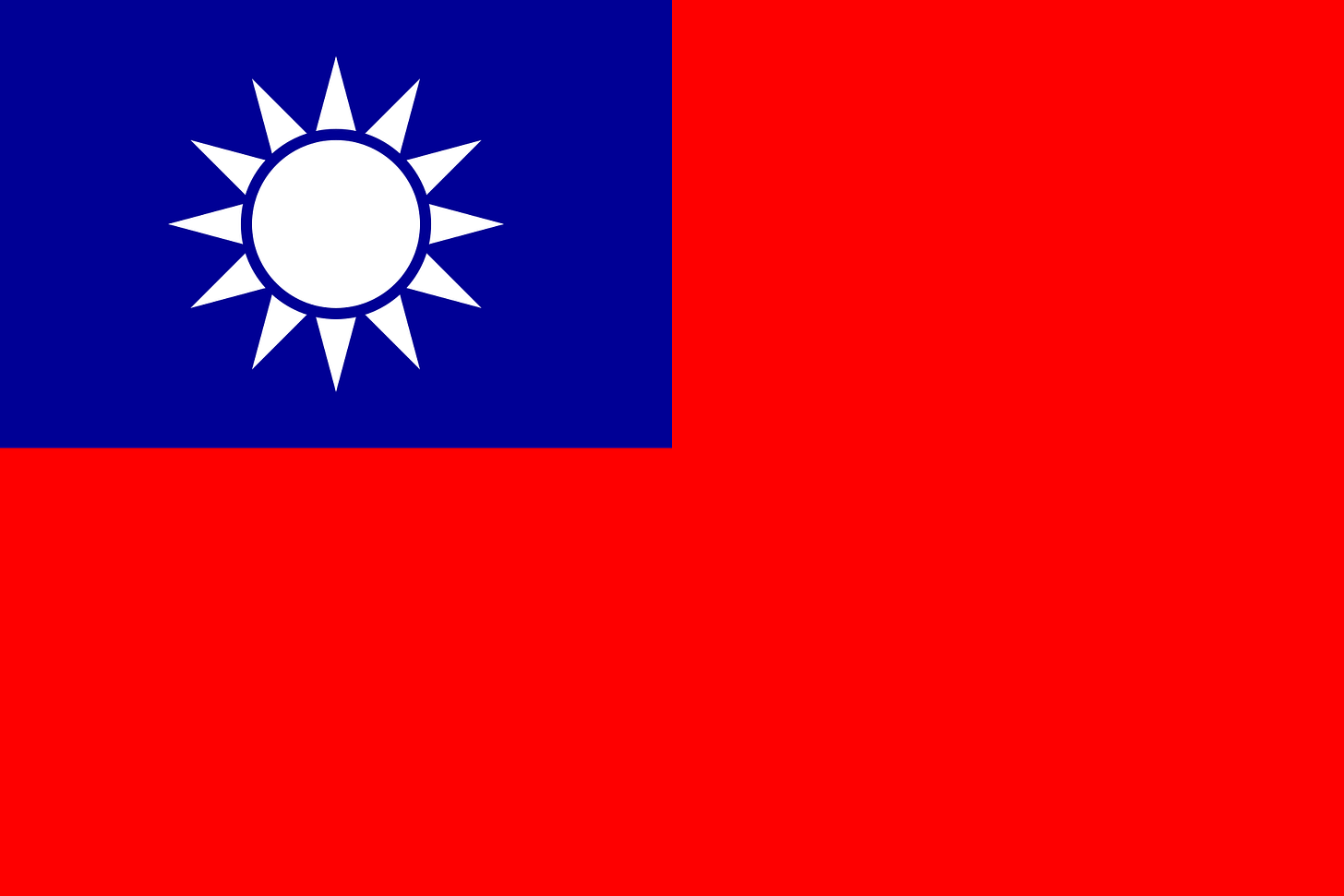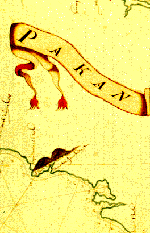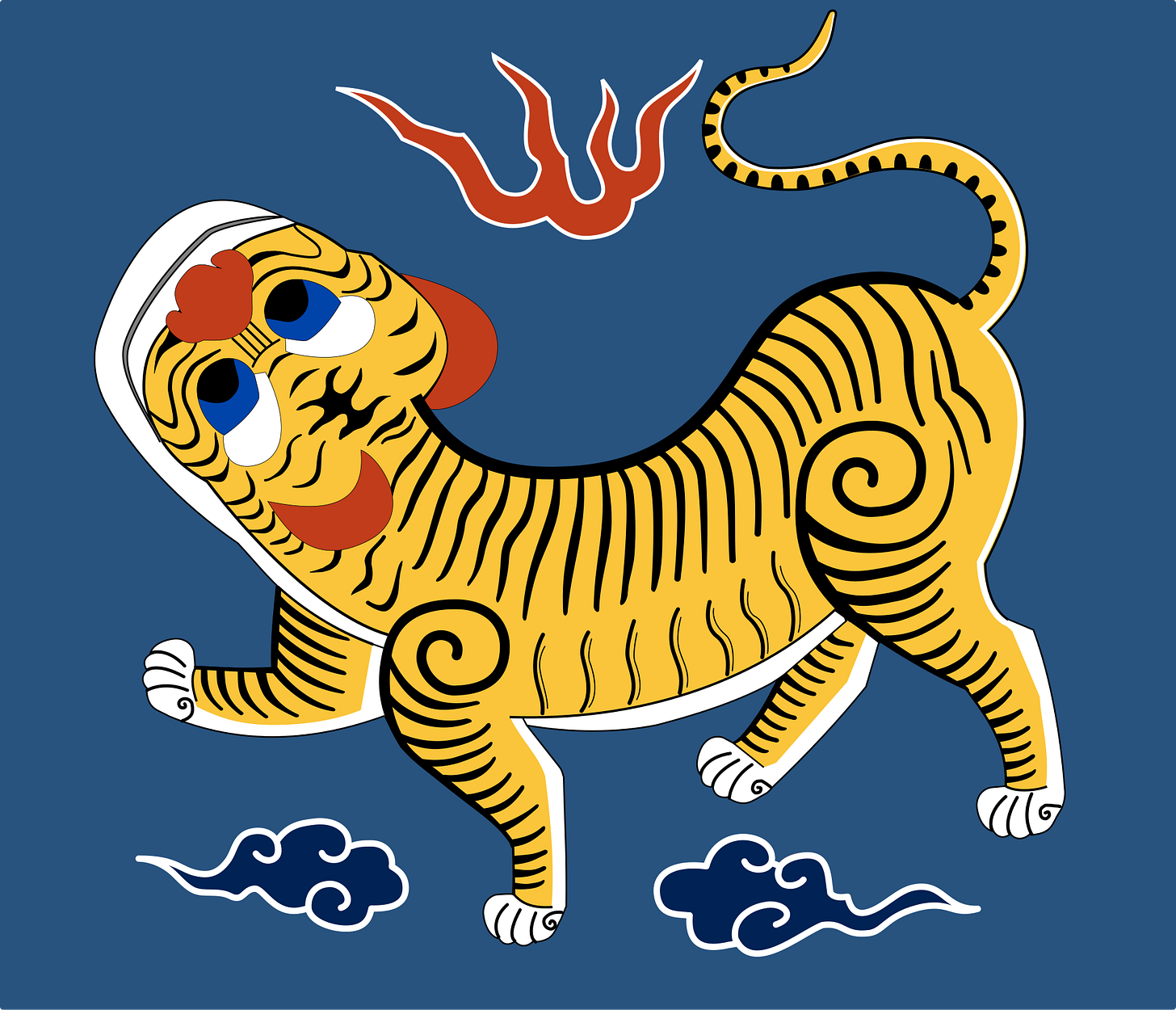Around 6,000 years ago, Taiwan was settled by farmers believed to be the ancestors of today's Taiwanese Austronesian speaking peoples. Taiwan consists of 168 islands including one larger island known as the main island of Taiwan, sometimes called Formosa. Portuguese sailors, passing by Taiwan in 1544, first jotted the name Formosa in a ship's log meaning "Beautiful Island". Before the Dutch came, they had been living on the island undisturbed for thousands of years. They called the island Pakan as it is named on an old Dutch map.
Important dates in Taiwan’s History:
1626-1642 Spanish
1624-1662 Dutch
1662-1683 Ming Dynasty loyalist Koxinga
1663-1887 Chinese migrant workers/ Ching Administration
1884-1885 French occupied the northern part of Taiwan for 9 months
1887-1895 Manchu declare as “province”
1895-1945 Japanese
1945-1949 Republic of China (ROC), Taiwan
1949-1987 Martial Law
1988 Lee Teng-hui (KMT)
2000 Chen Shui-bian (DPP) Democratic Progressive Party
2008 Ma Ying-jeou (KMT)
2016-Present Tsai Ing-wen (DPP)
Spanish Colonisation
The Iberian union brought the Portuguese and Spanish under Hapsburg rule in 1580 and all Portuguese overseas ventures and territories were incorporated under Spanish rule. Spanish Formosa was established as a small colony of the Spanish Empire in the northern tip from 1626 to 1642. They took control of Keelung harbor in the north and another base at Danshui to expand trade with Japan. Typhoons, malaria and local aborigines eventually kicked most of them out of the island by 1638.
Dutch Colonisation
The Dutch colonisation of Formosa was part of a campaign to seize the possessions of the Spanish Hapsburgs in Asia, including the Philippines. The Dutch East India Company attempted to colonise the island to compete against Spanish merchants in the Asian market. It was ceded to the Dutch Republic during the Eighty Years' War. When the Dutch arrived, they found only the Austronesian Taiwanese population on the island. At that time there were no signs of administrative structure of Chinese Imperials.
On a narrow peninsula on the Southwestern coast of the island, the Dutch established a fortress named "Zeelandia". The peninsula was called Tayouan, meaning terrace bay. This later evolved into Taiwan, and came to be the name for the whole island
By 1650, Dutch settlers ruled 315 tribal villages with a population of around 68,600. The Dutch traded a variety of products, including sugar, pepper, nutmeg, cinnamon, rice, pepper, and silk. They brought in Chinese laborers for the sugar plantations and rice fields, who came for a few years and then returned to China. Eventually, the Han settled and married Austronesian wives. Other tribes retreated and became the "mountain people."
Ming and Ching
In China, the Ming dynasty was in collapse. The Manchus take control of Beijing and establish the Qing Dynasty. In 1662 Fort Zeelandia and Fort Provintia were ambushed. These forts were defeated by the Chinese pirate, Cheng Cheng-kung (Zheng Chenggong or Koxinga), a loyalist of the old Ming dynasty, who was on the run from the newly established Ching (Qing) dynasty. He died shortly afterwards of malaria. His son took over, but in 1683, this last remnant of the Ming Dynasty was defeated by Ching troops.
Emperor Kangxi (康熙帝) of China said Taiwan was: “the size of a pellet, taking it is no gain; not taking it is no loss.” His ministers called the island “…a ball of mud beyond the seas, unworthy of development by China. It is full of naked and tattooed savages, who are not worth defending. It is a daily waste of imperial money for no benefit.” The emperor even offered to sell it back to the Dutch. Admiral Shi Lang, who had led the capture of Taiwan, protested this decision. Shi argued for the importance of annexing Taiwan on both strategic and economic grounds. In 1684, Taiwan was officially incorporated into the Qing empire. There were more than a hundred rebellions, and riots during the Qing administration. They had a common saying, "every three years an uprising, every five years a rebellion". For 200 years, the island remained lawless with widespread crime. Whenever the Manchu tried to exert control, the islanders fought back.
Opium Wars
The Opium Wars in the mid-19th century were a critical juncture in modern Chinese history which also affected Taiwan, as shall later be explained. In earlier times, opium was used as a medicine, but recreational smoking increased demand and led to addiction. The British East India Company and the Dutch East India company were both involved in opium trade. The Chinese Emperor issued edicts making opium illegal in 1729, 1799, 1814, and 1831. In 1834 East India opium trade ceased, but the illegal trade continued. The Chinese government recognised the serious social problem and began to crack down on opium production and trade.
In the first Opium War, in 1840 a British naval force arrived, defeating the Chinese Empire with its superior ships and guns. China was forced to sign the Treaty of Nanking (Nanjing) in 1842. The terms of its defeat were to cede Hong Kong to the British, open ports to trade, a 21 million dollar payment to the United Kingdom, as well as giving “favoured nation” status to the British. In the second Opium War, from 1856 to 1860, a weakened China fought both Great Britain and France and lost.
The British East India Company hired private British and American traders to transport illegal opium to China. Chinese middlemen bought opium from anchored British and American ships and distributed it. More Chinese were smoking opium and once addicted, people would do anything to get access to the drug. The Chinese government had to stand by while in the name of “free trade”, the British increased their opium sales to people in China without regard to the consequences. In the late 1860s and early 1870s, the British continued to use the excuse of suppression of piracy as a rationale for colonial expansion.
The Qing government responded to the imbalanced treaties mainly by dragging their feet on implementing agreements. This ineffectiveness resulted in long-term problems for China, such as more unequal treaties, repeated foreign military invasions, internal rebellions, internal political fights, and social upheaval. In 1860, British and French troops landed near Beijing, fought their way into the city, and looted the Imperial Summer Palace. The Chinese emperor fled to Manchuria in northeast China and his brother negotiated and ratified the Treaty of Tientsin. The Qing Dynasty was greatly weakened and had to focus on modernising its military, political, and economic structures.
Taiwan ceded to Japan
The Chinese were unsure what to do with the island of Taiwan. The Chinese people were banned from migrating from the mainland. However, there was poverty and mass famine in the empire. So, despite the law, people from Fujian on mainland China fled to Taiwan for a better life. Ethnic Chinese Han married Taiwanese aborigines and the population rose to over 2 million. Clashes continued between locals and Chinese officials. Qing officials alternated between a pro-quarantine approach and a pro-colonisation approach throughout this period. In 1875, the Qing adopted the “Open the Mountains and Pacify the Savages” (kaishan fufan) policy.
More battles were fought in undeclared wars between the Chinese and the French over Vietnam. For nine months from 1884 to 1885, the northern part of Taiwan was French territory. Their victory didn’t last long and the French evacuated both Keelung and the Penghu archipelago after the end of the Sino-French war (Tonkin war).
It wasn't until 1887 (200 years after annexation), that Chinese Imperial authorities declared Taiwan a province. Imperial China occupied Taiwan for only eight years. In 1895, the Japanese defeated China in the Sino-Japanese War. China ceded Taiwan to Japan “in perpetuity” in the Treaty of Shimonseki.
The occupying Japanese troops were met with local guerrilla resistance and required large forces in order to gain control of Taiwan. With the assistance of disillusioned Manchu officials, the Formosa Republic was formed in May 1895 and they even had their own flag. However, days later, a Japanese military force came and squashed the movement. The Japanese suffered losses from battle, disease and constant ambushes. Revenge was also taken on innocent villagers who were ruthlessly slaughtered. The peaceful villagers were driven from their homes which generated feelings of hatred. This resentment continued despite the fact that the Japanese improved the educational system, tackled disease, expanded the railway and built new roads.
Opium in Taiwan
There is a long history of opium use in Taiwan. Beginning in 1544, Taiwan was used as a Dutch, French, and Portuguese service station for ships sailing to China and Japan. Opium was heavily trafficked by the Dutch from the East Indies through to Taiwan and then onto China. This also continued throughout the Chinese occupation prior to annexation. As a result, opium use was widespread throughout Taiwanese society.
The opium habit in Taiwan grew as a result of the Opium Wars in China. The Japanese regarded it as an uncivilised and lazy practice. Japan's desire to “civilise" Formosa and the "savages" focused on opium usage. In 1897, the Japanese government issued the Taiwan Opium Edict which restricted the sale of opium to "proven addicts" which required licensing. Taiwanese already addicted to opium were allowed to smoke under government regulation.
The Japanese government's controversial opium edict was viewed as a monopoly for individual gain. Opium was 60% or more of Taiwan's total yearly revenue. The revenue funded Japan's occupation of Formosa, and controlling opium usage was a method of controlling the population. Economic prosperity as a result of the monopoly was also used to further Japan's colonial interests.
Meanwhile back in China, revolutionaries led by Sun Yat-sen overthrew the Qing Dynasty (the last Chinese Dynasty). The Republic of China (ROC) was created in 1911. Chiang Kai-shek headed the Chinese Nationalist Party, or Kuomintang (KMT).
After WWII
WWII ended in 1945 and the Allied Powers held the Cairo Conference which agreed that Taiwan be “returned to (Nationalist) China”, but this occurred without any Taiwanese representatives. Allied powers agreed that Chiang Kai-shek’s troops would "temporarily occupy Taiwan, on behalf of the Allied forces".
History repeats itself, in 1949, Chiang Kai-shek lost the war on the mainland to communist China and fled to Taiwan where he established his regime. Two million mainlanders came with him, which constituted 15 percent of the population of the island. The KMT maintained power by controlling the media, police, military, educational system and political system. Austronesian languages were also banned.
Due to disagreements over which government to invite, China did not attend the signing of the Treaty of San Francisco in 1951. Japan renounced claims without specifying to whom they surrendered. A year later, Japan and the Republic of China (ROC) signed the Treaty of Taipei declaring all treaties before 9 December 1941 between China and Japan null and void. Interpretations of these documents gave rise to debate over Taiwan’s sovereignty status.
Most of Taiwan's approximately 300,000 Japanese residents were expelled and sent back to Japan. Initially, the Taiwanese were glad to be rid of the occupation, but the “temporary” occupation of the Chinese troops became more permanent. Taiwanese resented the corrupt and repressive KMT and tensions were mounting.
In 1947 a small incident in Taipei led to large demonstrations against the cruel regime. The KMT sent troops to round up and execute leading figures, students, lawyers, and doctors. Up to 28,000 people were killed, and about 140,000 more were arrested, imprisoned, and tortured for their real or perceived opposition. They were labeled as Chinese Communist “bandit spies”.
Chiang Kai-shek died in 1975 and was replaced by his son Chiang Ching-kuo. Martial Law was finally dropped in 1987, but was replaced by “National Security Law”, which continued to restrict freedoms. For four decades, the people of Taiwan lived under these strict conditions, while the KMT maintained the fantasy that they would some day recover the mainland. Even after losing control of mainland China, the KMT continued to claim sovereignty over “all of China”, which it defined as mainland China (including Tibet), Taiwan (including Penghu), Outer Mongolia, and other minor territories.
In some contexts, the island became known as "Republic of China, Taiwan", or sometimes "Taiwan (ROC)”. The United Nations recognised only the People’s Republic of China (PRC) and not the Republic of China (ROC). In some international forums, the island participated as “Chinese Taipei”. The island made strides toward a democratic political system, but the KMT continued to cling to their claim that "Taiwan is part of China."
The next few decades can be briefly summarised:
1986 Democratic Progressive Party (DPP) is born.
1988 Chiang Ching-kuo died.
1988 Lee Teng-hui (KMT) comes into power, reforms are initiated.
1991 KMT claim on China was dropped, and ageing Nationalist Chinese legislators were sent into retirement.
1992 Consensus meeting was held in which both sides agreed that there was only one China, but disagreed on the definition of China (ROC vs. PRC), an ambiguity which continued for decades.
1996 Lee Teng-hui wins Taiwan’s first free presidential election.
2000 KMT loses power in a peaceful election. Chen Shui-bian (DPP) becomes president.
Taiwan begins to develop its own cultural identity through music, art, fashion and food.
Chen Shui-bian administration ends in corruption investigations of the First Family as well as government officials.
China isolates, threatens and divides Taiwanese society. It says it will crush Taiwan if it ever declares independence.
2008 Ma Ying-jeou (KMT) is elected.
In 2014 Sunflower Student Movement successfully prevented the ratification of the Cross-Strait Service Trade Agreement. Public protests expressed disapproval of the undemocratic behavior of the KMT.
2016 The youth movement contributed to the victory of Tsai Ing-wen (DPP) as president, she pledges to never accept two systems (ROC vs. PRC).
2020, President Trump signed the TAIPEI ACT, and the Consolidated Appropriations Act of 2021, which incorporated the Taiwan Assurance Act of 2019.
Source material for this article is mainly various Wikipedia articles:







I thought I would read this during my morning coffee. But I am only at the flag. It's a lot of history put into one article. There was so much going on in Taiwan. And still is.
It's a very interesting read. I had no idea about any of this.